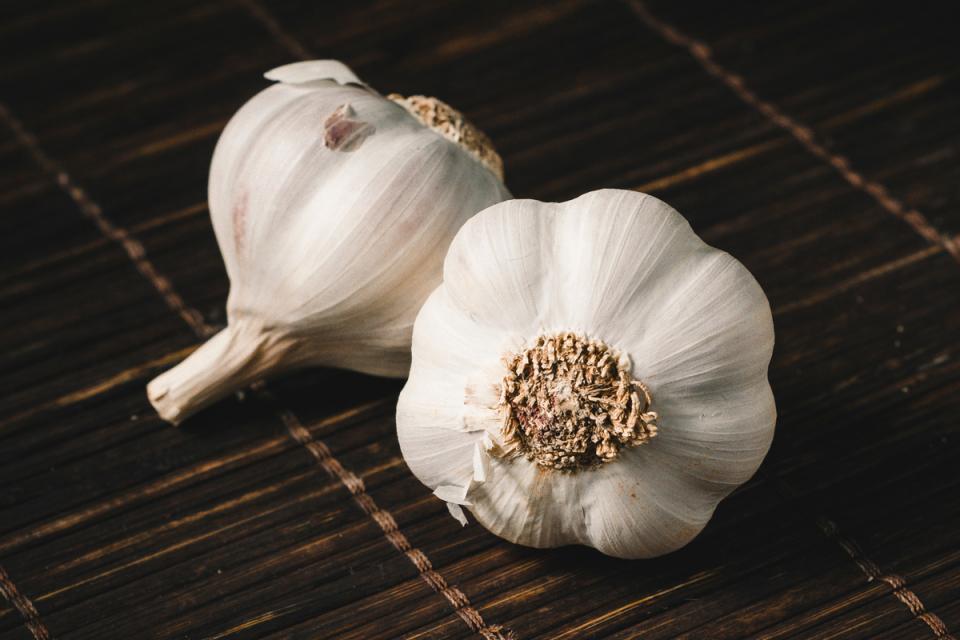
Did you know that the closer a food is to its natural state, the more nutrient-dense it is? Whole foods give you the best bang for your caloric buck since you are eating the entire food with all its vitamins, minerals and fiber, and the food has not been subjected to potentially damaging processing.
Make a goal this year to include more whole plant–based foods in your diet. You probably already eat berries as whole foods. Try these other suggestions from Lourdes Castro, MS, RDN, adjunct professor at New York University’s department of nutrition, food studies and public health.
1. Beets, Garlic, Sweet Potatoes
Why eat these foods? Roots, tubers and bulbs grow underground and function as a plant’s nutrient-storage system, so it’s no surprise they are packed with vitamins and minerals. They provide antioxidant benefits, such as protection against many chronic diseases and conditions associated with aging.
Whenever possible, use the entire plant from root to leafy greens. Different parts of the plant may require different cooking methods, but the nutrient density is worth it.
Try this at home. Roasted beets with sautéed garlicky beet greens are delicious and easy. Remove the beet tops where stems meet the root, and roughly chop. Quarter the beets and lightly toss with olive oil, salt and pepper. Roast in the oven at 425 degrees Fahrenheit for 35 minutes, or until beets are fork tender. Meanwhile, finely chop 1–2 cloves of garlic and place in a pan with 1 tablespoon olive oil. Place over medium-high heat and add beet greens when the garlic begins to sizzle. Sauté until all greens are wilted. Serve with roasted beets.
Alternative. Roast sweet potatoes and substitute watercress for the beet greens.
2, Lentils, Chickpeas, Fresh Snap Peas
Why eat these foods? Legumes are seeds that grow in pods. The seeds can be fresh or dried, the pods edible or inedible. Legumes are rich in protein, fiber and iron, and they get an extra punch from folate. High folate intake can decrease cardiovascular risk (Willet 2001).
Try this at home. Dried lentils are quick-cooking and versatile. Simmer them in water until tender and then drain and cool. Toss with tomatoes, arugula, corn and carrots, and drizzle with olive oil and a squeeze of lemon. Eat this salad alone or augmented with sliced chicken breast. It also makes great leftovers.
3. Chia Seeds, Walnuts, Ground Flaxseeds
Why eat these foods? All nuts and seeds are rich in healthy monounsaturated fats and help stabilize blood sugar levels. But these foods are especially high in essential omega-3 fatty acids, which lower inflammation throughout the body (Calder 2006). This is especially good for people with arthritis and other inflammatory diseases.
Flaxseeds must be ground to enable your body to absorb all their beneficial nutrients, because the whole seeds pass through the intestines undigested. Chia seeds, on the other hand, do not have to be ground and have a longer shelf life because they can be left whole.
Try this at home. Soaking a table-spoon of chia seeds (or ground flaxseeds) in water will form a gel. Add this gel to your berry purée for a thick smoothie.
Why eat these foods? Sea vegetables (types of seaweed) such as dulse, wakame and hijiki are high in both iron and vitamin C, which make them high-value iron sources because vitamin C is necessary for the absorption of plant-based iron. Sea vegetables are thought to have an anti-inflammatory effect, and regular ingestion has been linked to low blood pressure (Wada et al. 2011).
Try this at home. Crumble dulse or wakame leaves and sprinkle over salads, soups, noodles or rice dishes.
References
Calder, P.C. 2006. N-3 polyunsaturated fatty acids, inflammation, and inflammatory diseases. American Journal of Clinical Nutrition, 83 (6), 1505S–19S.
Wada, K., et al. 2011. Seaweed intake and blood pressure levels in healthy pre-school Japanese children. Nutrition Journal, 10, 83.
Willet, W. 2001. Eat, Drink, and Be Healthy. New York: Free Press.
Fitness Journal, Volume 13, Issue 1

